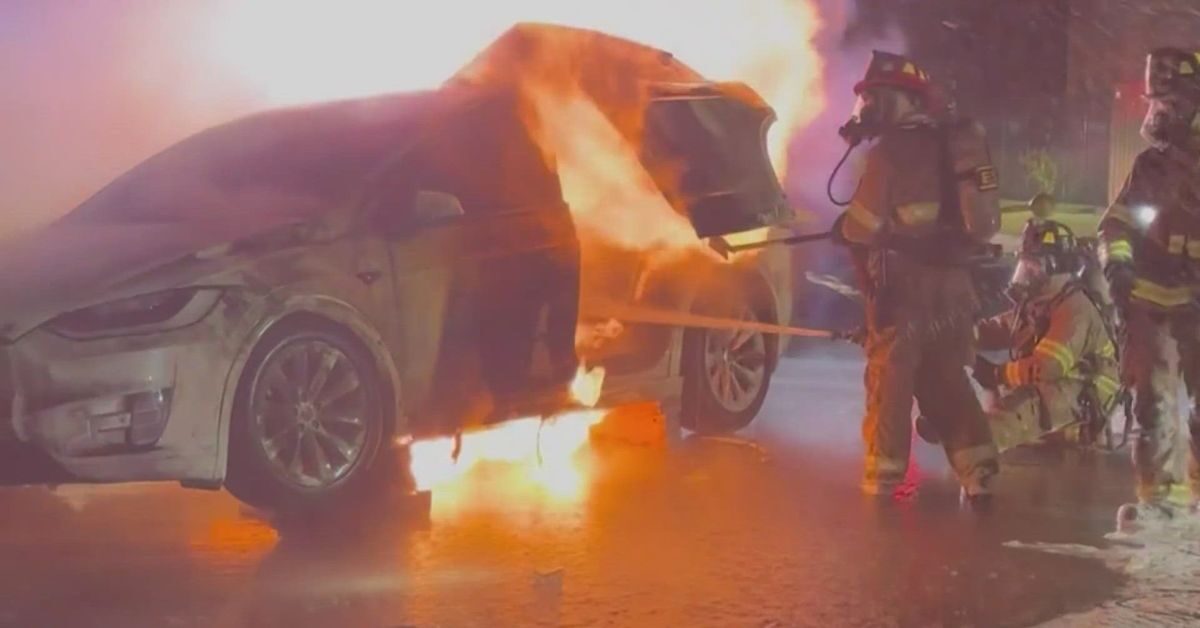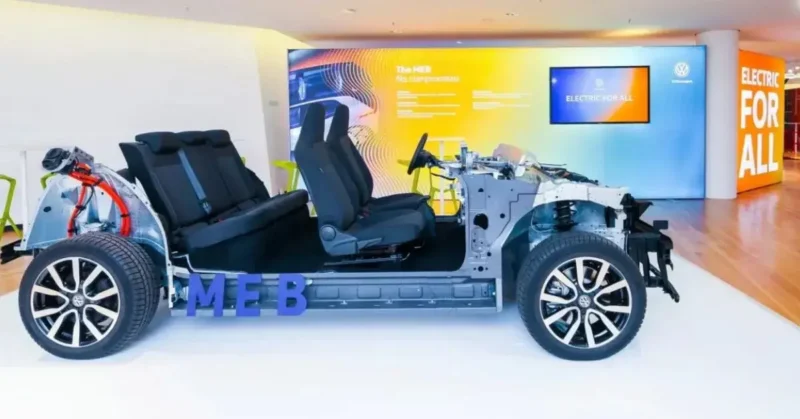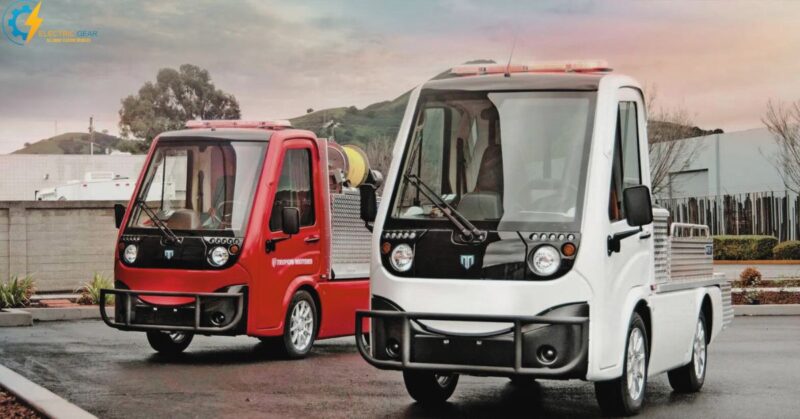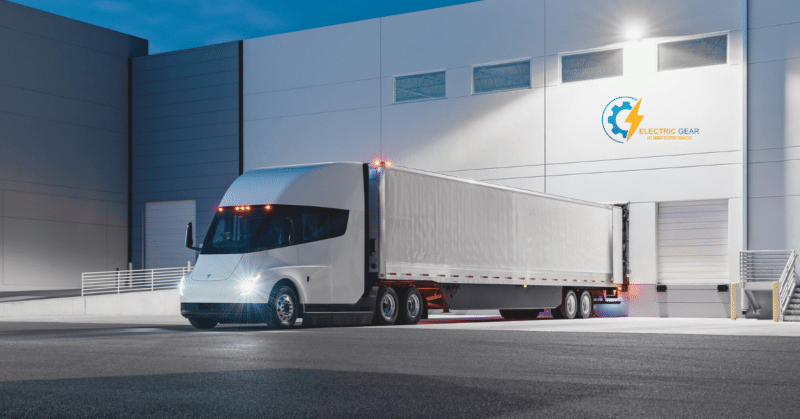“A battery-powered vehicle having a fire incident is newsworthy. A gasoline-powered vehicle having a fire is newsworthy only if it stops traffic,“ Said one of the foremost authorities on the possibility of flames in electric cars, Steven Risser, senior research head at Battelle, a non-profit research and development company.
In contrast to gas-powered vehicles, electric vehicles are much less likely to catch fire. Teslas have a lower fire risk compared to other automobiles. Electric cars were engaged in fewer fire accidents than gasoline-powered vehicles.
However, learning the causes of Tesla catching fire is crucial. Several factors, including defective cabling, electrical faults, and battery issues, could lead to a Tesla catching fire.
Since Teslas are electric vehicles, any incidents involving them are widely reported as a significant development in the automotive industry. That’s why it gets a lot of worldwide attention whenever there’s a minor problem with one of these electric automobiles.
So that you can make an informed decision about buying a Tesla, it’s time to look at the data on Tesla catching fires.
How Common Are Fires in Tesla Cars?
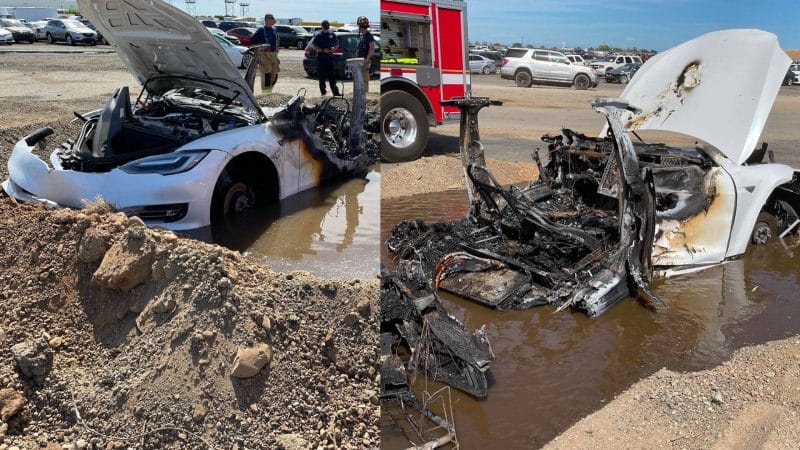
One fire per 19 million kilometers driven is the national rate for car fires, as reported by the National Fire Protection Association (NFPA). This a massive victory for Tesla and the electric vehicle industry; the ratio of 11:1 is impressive for both vehicles.
Even if we assume that the Tesla fleet is younger than the national norm, the edge of 11:1 still seems excessive. Fires are not more prone to start in electric automobiles than in gas-powered ones. Five car fires per billion miles driven are reported by Tesla, which produces more than half of the electric vehicles sold in the United States, compared to 55 fires per billion miles driven by gas-powered vehicles.
There was about one fire per 210 million miles kilometers driven in a Tesla car between 2012 and 2021, the firm claims (compared to 205 million miles in 2012-2020).
Accidents involving electronic vehicles pose a new technical and safety problem for emergency services. These flames blaze hotter and saltier than regular vehicle fires, thus requiring more water.
Fires in Teslas are infrequent, as evidenced by statistics gathered between 2012 and 2020. The combustibility of a car can be affected by the gasoline it uses. Due to the lack of an internal combustion engine, it is highly unusual for a Tesla car to take fire.
Tesla Fire Data
“From 2012 – 2021, there has been approximately one Tesla vehicle fire for every 210 million miles traveled. By comparison, data from the National Fire Protection Association (NFPA) and U.S. Department of Transportation shows that in the United States there is a vehicle fire for every 19 million miles traveled.”
Additionally, statistics from EV manufacturers of EVs’ least involvement in fire incidents might be viewed with some suspicion; a US insurer studied data from the National Transportation Safety Board and found that battery-powered EVs only experience 25 fires per 100,000 sold, compared to 1,530 for gasoline or diesel vehicles and, most notably, 3,475 for hybrids.
According to the new 2021 Impact Report from Tesla, there were roughly 5 Tesla vehicle fires for every 1,000 million miles traveled between 2021 and 2021, while the national average for all vehicles is 53.
Are Tesla Batteries Safe?
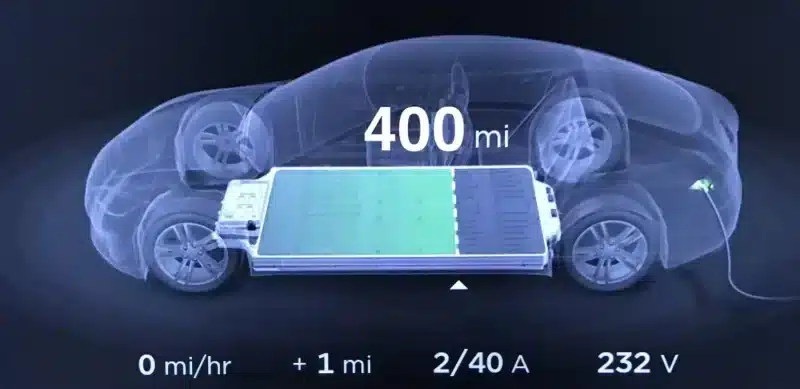
Although lithium-ion batteries have come under closer scrutiny since the Tesla fires, it is essential to remember that they are still the least prone to fire and are relatively safe if used correctly. The likelihood of a fire or explosion is minimal if regular maintenance at specific intervals is performed.
“The propensity and severity of fires and explosions from … Lithium-ion battery systems are anticipated to be somewhat comparable to or perhaps slightly less than those for gasoline or diesel vehicular fuels,” Describe the findings of a 2017 study by Battelle for the National Highway Traffic Safety Administration comparing the fire hazards of the two car kinds.
According to Tesla, gasoline-powered vehicles are 11 times more likely to catch fire than electric ones. It is stated that fires per 1 billion vehicle miles driven are the most comparable metric, and it is estimated that the 7.5 billion miles driven in the 300,000 Teslas currently on the road have caused 40 fires.
That’s five fires for every billion miles driven, whereas gasoline cars have 55 for every billion miles driven. “Tesla’s battery packs rarely incur serious damage, and when they have, the accident was highly unusual or severe,” said Tesla’s statement.
“There are really only a few reasons why a lithium-ion battery catches on fire,” one fire expert told Business Insider. “Liquid, dead short,” or, for every one battery cell in a billion, “spontaneous combustion.”
Tesla Catching Fire While Charging
Do electric cars catch fire when charging?
One 2017 Tesla Model X caught fire while charging on November 12, 2019, in Chester, England, destroying the vehicle. On Tuesday, January 19, 2021, a Tesla Model 3 exploded in a residential parking garage beneath Shanghai.
According to studies conducted by the Occupational Safety and Health Administration, lithium-ion batteries have four joint fire causes:
- You’ve been overcharging
- Heavy drain on the power source
- Battery overheating, swelling
- and eventual rupture can result from improper design, production, or charging.
The lithium-ion batteries used in electric vehicles are also heat-sensitive, and when heated too rapidly, they can spontaneously ignite.
Lithium-ion batteries use a flammable and highly combustible electrolyte to store and release energy. Due to its high combustibility, this electrolyte can easily catch fire in the presence of high temperatures or an ignition source.
Your presence near the EV is not required during the charging process. However, you can only sometimes leave the car plugged in once the battery is full. It will alert you when it reaches the maximum charge level you define.
Problems will inevitably arise when transmitting high-voltage electricity from charging stations to vehicles. A fire could start as a result of one of these failures.
Seven separate Teslas have caught fire while being charged. Here we list the dates and locations of each occurrence.
| Incidents Date | Incidents Location |
| 1/8/2022 | Denmark |
| 1/5/2022 | USA |
| 6/1/2019 | Belgium |
| 7/26/2017 | USA |
| 3/8/2017 | China |
| 1/1/2016 | Norway |
| 11/15/2013 | USA |
Is it Safe to Charge Tesla in the Garage?
It’s okay to let your electric car charger in the driveway; Tesla presumably never warned you otherwise. Electric vehicles (EVs) are similar to large electrical equipment in that they heat up when plugged in or turned on but do not produce harmful emissions.
“Refueling” an electric vehicle is as easy as pulling into the driveway and plugging it in, a significant convenience over the typical gas station visit. Users can plug their vehicles into a standard socket, which will take quite some time, or install a wall charger, allowing for a much faster charge.
How Many Tesla Cars Have Caught Fire
Elon Musk, President of Tesla, has said that only 0.01% of Teslas have ever caught fire. There have been 49 reported Tesla vehicle fires as of November 2022.
Out of the 49 instances, 5 involved cars that were stopped and not in motion at the time of the collision. Fourty-four of the reported burning fires happened while the vehicles were being driven.
- One fire has occurred in a Tesla car for every 175 million miles driven, whereas the national average for all vehicles is 1 fire for every 19 million miles driven.
- It is believed that 143 Tesla vehicles caught fire over the nine years.
- As many as seven Teslas have caught fire while being charged.
Tesla fires annually: There are about 15.88 fires per year involving Tesla vehicles. Contrast that with the annual norm of 182,000 vehicle accidents, and you can see how much lower this figure for the EV is.
Tesla vehicles have an excellent safety reputation and are highly secure.
Do Teslas Catch on Fire More Than Other Cars?
“Gasoline is a very risky material. We have had 130 years of designs and experience to make a gasoline-powered vehicle as safe as possible. We’re still at early stages of understanding how to make Lithium-ion batteries safe,” he said.
It’s time to dispel the myth that Teslas are prone to spontaneous combustion. Many people still believe falsehoods that Teslas are more prone to fires than other cars.
A few studies indicate electric cars have a lower fire risk than petroleum or hybrid-electric vehicles. Elon Musk, President of Tesla, has previously stated that fires have occurred in less than 0.01% of vehicles.
However, a US insurer looked at statistics from the National Highway Traffic Safety Administration and found that battery-powered EVs have a much lower rate of fires (25 per 100,000 sold) than gasoline or diesel cars (1,530 per 100,000 sold) and especially hybrids (3,475 per 100,000 sold).
Nonetheless, data shows that gasoline-powered vehicles are more prone to catching fire.
Do Electric Cars Catch Fire in a Crash?
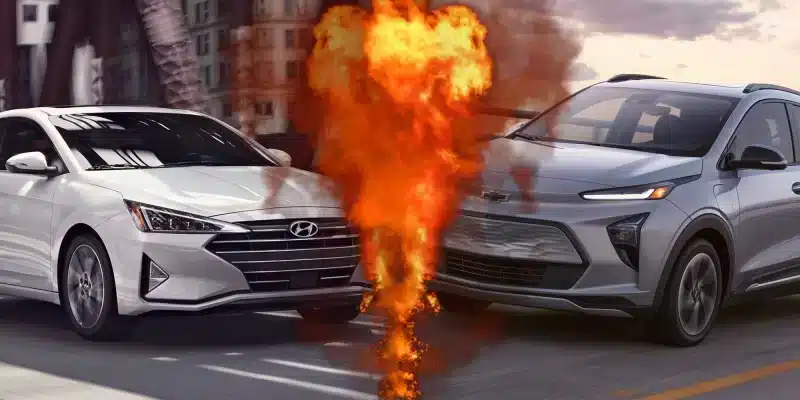
Each battery cell in a pack of batteries for electric cars stores a combustible liquid solution. These packs can contain hundreds to thousands of individual cells. Lithium-ion batteries are the ideal power source for electric vehicles due to their high energy density; however, this also makes them more prone to fire and explosion in the event of a collision.
A lot is going on in the event of a car accident, and any vehicle has the potential to catch fire, and there is no exception for Tesla vehicles.
However, a vehicle’s tendency to catch fire is proportional to the severity of the impact. Minor collisions that don’t damage the electric engine shouldn’t spark a fire in a Tesla. In most cases, Tesla vehicles will not catch fire after a minor collision.
However, there have been recorded cases where Tesla vehicles caught flames after accidents. In most crashes, the only result is minor harm.
During a severe collision, particles from a damaged electric motor can ignite the battery. However, if your Tesla is engaged in a significant collision, the battery cell may sustain some harm.
How Many Cars Catch Fire Every Year
Using information from the IEA and KBB, we calculated that approximately 2825 electric vehicles experience fires annually. There is a growing worry about electric vehicles, despite their increasing popularity.
Elon Musk, President of Tesla, has previously stated that fires have occurred in less than 0.01% of Tesla vehicles. According to the National Highway Traffic Safety Administration and the National Fire Protection Association, the yearly percentage for all passenger and heavy-duty cars in a particular year is 0.08%.
Why do Teslas Catch on Fire?
About sixty Tesla vehicles have taken fire since the company began producing electric vehicles.
However, just like any Tesla acquisition, there are a few things to consider before purchasing an electric vehicle. The most explosive models are included in this group. The technology inside a Tesla is the same regardless of model. The report, however, suggests that the Tesla S is more explosive than other versions.
Tesla Car Fire Statistics
Approximately one Tesla car fire occurred for every 210 million kilometers driven between 2012 and 2021. A car fire occurs every 19 million kilometers driven in the United States, according to the National Fire Prevention Association (NFPA) and the Department of Transportation.
Key Electric Car Fire Statistics
- For example, the National Transportation Safety Board found that fires are less likely to start in electric cars.
- The danger of fire is greatest in hybrid cars.
- A total of 215,000 automobiles will catch fire in 2020, according to projections.
- Battery-powered cars have a 0.3% ignition risk, far lower than the 1.5% risk for gas-powered cars and the 3.4% risk for hybrid cars.
- In 2018, car accidents cost the United States economy $1.9 billion.
| Type | Fires (per 100K vehicle) | Total Fire |
| 1. Hybrid | 3474.5 | 16,051 |
| 2. Gas | 1529.9 | 199,533 |
| 3. Electric | 25.1 | 52 |
Is Tesla the Safest Car in the World?
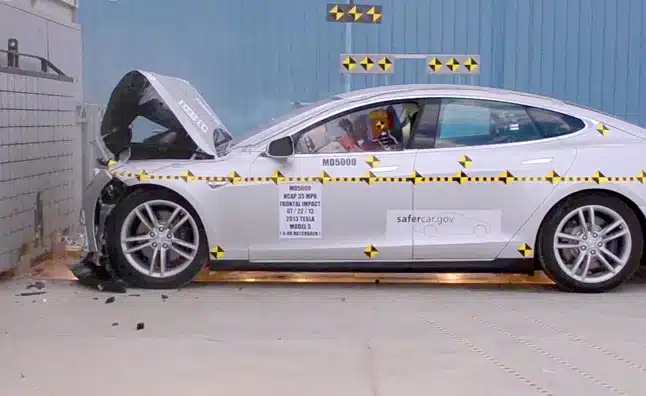 Image credit: Google[/caption]
Image credit: Google[/caption]
Still, it’s easy to see that the Tesla Model S is miles ahead of the pack regarding automobile safety. European New Car Assessment Program (Euro NCAP) findings for the 2022 Tesla Model S: Protection for adult occupants is 94%. Relative safety for young occupants is 91%.
The National Highway Traffic Safety Administration gave the Model S, the Model 3, the Model X, and the Model Y a perfect score in all of their safety tests, including their crash resistance. The New Vehicle Evaluation Program also found that these cars had the lowest total harm likelihood of any vehicle evaluated in the United States.
Tesla Catching Fire: Stay with Us for the Latest Updates!

Imran is an experienced content writer who crafts engaging and informative articles for a variety of industries. With a keen eye for detail and a passion for storytelling, Imran delivers high-quality content that resonates with readers. Whether he’s writing blog posts, social media content, or website copy, Imran is committed to delivering compelling content that drives results.

